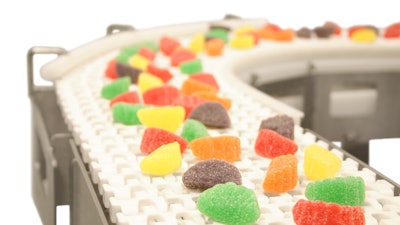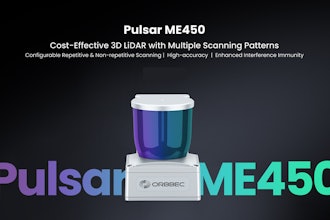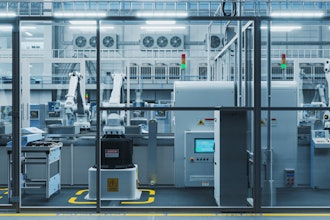
In the ever-evolving food processing and packaging landscape, automation has become more than just a buzzword; it's a transformative force reshaping the industry. Among the key players driving this change are advanced sanitary conveyor systems, which revolutionize how products move along the production line and enhance overall efficiency and safety.
The Rise of Automation in Food Processing
Automation in food processing and packaging operations is no longer a luxury but a necessity. As end user demands for efficiency, safety, and sustainability rise, manufacturers are turning to automation to meet these expectations. Automation increases production speed and ensures precision, consistency, and compliance with stringent quality standards.
One of the pivotal elements in this automation journey is the adoption of advanced conveyor systems. These systems transport goods from one point to another and play a crucial role in seamlessly integrating various stages of the production process.
Conveyors: The Backbone of Automated Processes
Conveyors have been an integral part of manufacturing for decades, but recent advancements in sanitary conveyor design have taken their functionality to new heights. Sanitary conveyors are designed with hygiene in mind, addressing the stringent cleanliness requirements of the food industry. Hygienic standards cannot be an afterthought as food safety regulations constantly elevate requirements.
In the realm of food processing, conveyors serve a multitude of specific applications, showcasing their adaptability and versatility. At the highest level, it's clear that the goal of conveyance is to get more products from point A to point B. Still, truthfully, for every point on a food processing line's flowchart, there can be many touchpoints where different conveyors and conveyor accessories are required.
For instance, conveyors with elevation capabilities in bakery operations facilitate the smooth transition of dough from mixing stations to ovens, ensuring a consistent and precisely timed baking process. In meat processing, conveyors equipped with rotation mechanisms are crucial in presenting cuts for optimal processing, enhancing efficiency in deboning or packaging stages. Sensors integrated into conveyors prove invaluable in dairy processing, precisely monitoring the quality of milk products and facilitating the automatic diversion of any substandard items. Accumulation systems find their application in the packaging of snack foods, preventing congestion by managing the flow of products into packaging lines at an even pace.
What's New in Sanitary Conveyor Design?
Recent innovations in sanitary conveyor design focus on ease of cleaning, reduced risk of contamination, and adaptability to diverse production environments. One notable advancement is the incorporation of stainless-steel framing. Stainless steel, renowned for its corrosion resistance and durability, has become a staple in conveyor design. Its smooth, non-porous surface not only ensures easy cleaning but also prevents the accumulation of bacteria, maintaining a high level of hygiene throughout the production process.
Modular conveyor designs have also gained popularity, allowing for easy customization and scalability. This flexibility is essential as manufacturers must adapt their production lines to accommodate different products and packaging formats.
Automation and Conveyors: A Symbiotic Relationship
As automation continues to infiltrate food processing and packaging operations, the role of conveyors becomes increasingly crucial. Conveyors act as the arteries of an automated system, ensuring a smooth and continuous flow of products throughout the production process.
Integration of sensors and intelligent technologies into conveyor systems enhances their capabilities. For example, sensors can monitor the quality of products on the conveyor, diverting any substandard items to a reject lane. Intelligent technologies not only improve the overall quality of the final product but also reduce waste.
Enhancing Efficiency and Safety
The impact of automation on efficiency cannot be overstated. Automated conveyor systems minimize manual handling, reducing the risk of product damage and contamination. They also contribute to a safer working environment by eliminating repetitive and physically demanding tasks, allowing human workers to focus on more complex and value-added aspects of production.
The Road Ahead: Future Trends in Automated Conveying
Looking ahead, the future of automated conveying in food processing holds exciting possibilities. Artificial intelligence and machine learning expect to be more prominent in optimizing conveyor performance. Predictive maintenance powered by AI algorithms can anticipate potential issues, minimize downtime, and optimize overall equipment effectiveness.
Furthermore, collaborative robots, or cobots, are integrated into conveyor systems to work alongside human operators, enhancing productivity and flexibility. This collaborative approach combines the strengths of automation and human intuition, creating a synergy that drives innovation.
In the dynamic realm of food processing and packaging, automation is not just a trend but a transformative force shaping the industry's future. Conveyors, particularly those designed with sanitation in mind, are the unsung heroes of this revolution. Their evolution mirrors the industry's commitment to efficiency, safety, and adaptability, ensuring that the conveyor belt of progress never comes to a standstill. As we navigate the exciting terrain of automation, one thing is sure – the role of conveyors will continue to be pivotal in defining the success of future food processing and packaging operations.
Dylan Piccolo is the marketing communications specialist at Dorner (https://www.dornerconveyors.com/). He can be reached at [email protected].




















